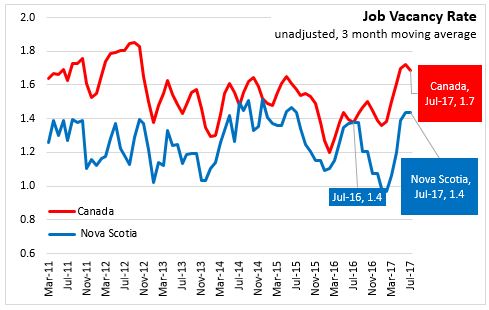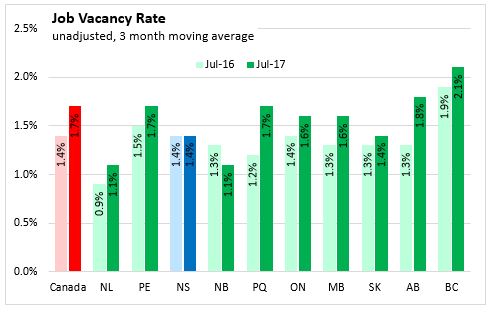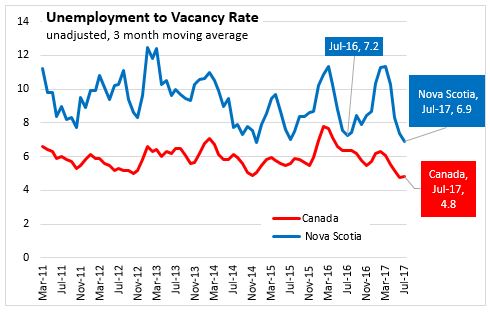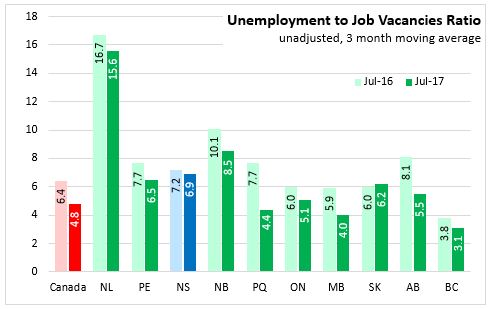The Economics and Statistics Division maintains archives of previous publications for accountability purposes, but makes no updates to keep these documents current with the latest data revisions from Statistics Canada. As a result, information in older documents may not be accurate. Please exercise caution when referring to older documents. For the latest information and historical data, please contact the individual listed to the right.
<--- Return to Archive
For additional information relating to this article, please contact:
October 26, 2017JOB VACANCIES, JULY 2017 In the 3 months ending in July 2017, there were an average of 5,600 job vacancies in Nova Scotia (unadjusted for seasonality).


Nova Scotia's job vacancy rate, the share of labour demand that is unfilled, was 1.4 per cent in July 2017, the third stable month. The job vacancy rate has risen since early 2017, signaling a tighter labour market in Nova Scotia, following a decline through the second half of 2016. Although the data series is relatively new, this appears to be emerging as a seasonal pattern in the province's labour market; the job vacancy rate also dipped later in 2015 and then picked up in early 2016.
Across Canada, Job vacancy rates are highest in British Columbia (2.1%), and lowest in Newfoundland and Labrador and New Brunswick (both 1.1%).

There were an average of 6.9 unemployed persons per job vacancy in Nova Scotia in the 3 months ending in July, down from 7.4 in the three months leading up to June.
The number of unemployed persons per job vacancy also signals slack or tightness in the labour market. After increasing through late 2016, the ratio of unemployment-to-job-vacancy has declined in recent months, sending signs of tightening in Nova Scotia's labour market. However, this also appears to be an emerging seasonal trend as the ratio is similar to levels reported in mid-2016.

British Columbia currently reports the tightest labour market conditions in Canada, with a job vacancy rate of 2.1 per cent and just 3.1 unemployed persons for each job vacancy. Newfoundland and Labrador reported the labour market conditions signaling the most slack, followed by the New Brunswick and Nova Scotia.

Source: Statistics Canada's Job Vacancies. CANSIM 284-0001 and 284-0003
<--- Return to Archive